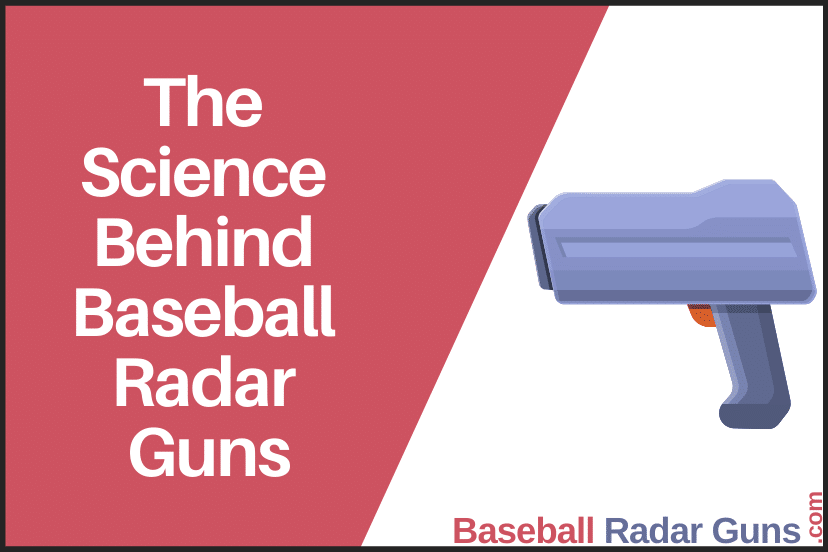The Science Behind Baseball Radar Guns: How They Measure Pitch Speed
*We may earn a commission for purchases made using our links. Please see our disclosure to learn more.
Baseball radar guns are a tool commonly used to measure the speed of a baseball. These guns have been used in sports since the 1950s and have become an essential tool for coaches and scouts. The technology behind these guns is incredibly complex and fascinating. In this article, we will discuss the science behind baseball radar guns and how to use the radar gun to measure pitch speed properly. Enjoy reading.
Table of Contents
How Radar Guns Work
Baseball radar gun works based on the principle of the Doppler effect. The Doppler effect of Baseball Radar Guns has been a hot topic in the baseball world for many years. It has been used to measure the speed of pitches, judge the accuracy of pitches, and even help determine the effectiveness of certain pitches. But what exactly is the Doppler effect, and how does it relate to Baseball Radar Guns?
The Doppler effect is an effect that occurs when waves of energy travel from a source to an observer. As the source of the waves moves, the frequency of the waves changes, causing the observer to detect different frequencies. This phenomenon was first discovered in 1842 by Austrian physicist Christian Doppler.
In baseball, the Doppler effect is used to measure the speed of a pitch. When a pitcher throws a pitch, the radar gun measures the frequency of the waves that travel from the ball to the gun. As the ball moves closer to the radar gun, the frequency of the waves increases, and as the ball moves away from the gun, the frequency decreases. This change in frequency allows the radar gun to measure the speed of the pitch accurately.
It is also used to judge the accuracy of a pitch. By measuring the frequency of the waves that travel from the ball to the gun, it is possible to determine the direction of the pitch. This allows the radar gun to determine how close the pitch is to its intended location, which can help coaches and players adjust their pitching technique.
Additionally, the Doppler effect is used to help determine the effectiveness of certain pitches. By measuring the frequency of the waves that travel from the ball to the gun, it is possible to determine the spin rate of the pitch. This can help coaches and players determine which pitches are most effective and which are less effective.
Summarily, radar guns measure the speed of a baseball by using radio waves. The radio waves are sent from the gun and bounce off the ball. The time it takes for these waves to travel and the distance they travel are then used to calculate the speed of the ball. The device is then able to display the speed on a digital display.
Components of Baseball Radar Gun
Although radar guns come in different shapes and sizes, a few components are needed to make them work. Here is a breakdown of the components of a baseball radar gun.
Pulse Transmitter:
The pulse transmitter is the main component of a radar gun. It sends out a short burst of energy, which is then reflected off the ball and back to the gun. The radar gun measures the speed of the ball based on the time it takes for the energy to return.
Receiver:
The receiver of the radar gun is what captures the reflected energy and measures the speed of the ball. It is a highly sensitive device and is the main component allowing the radar gun to accurately record.
Computer Processor:
The processor is the brains of the radar gun. It takes the data from the receiver, processes it, and then displays the speed of the ball on display.
Display:
This is the part of the radar gun that the user sees. It typically shows the speed of the ball in miles per hour.
Battery:
All radar guns need a power source to function. Most use a standard 9-volt battery, which is usually good for several hours of use.
How to Use a Baseball Radar Gun
Using a radar gun is relatively easy, but a few tips and tricks to use the device effectively and correctly.
First, make sure you’re in the right position. Stand far enough away from the pitcher so that you have an unobstructed view of the ball. You should also make sure you’re at the same level as the pitcher or slightly higher. If you’re too close, you won’t be able to accurately measure the speed of the pitch.
Second, it is important to hold the radar gun properly. Hold the gun in a way that allows you to easily point it at the ball and keep your finger on the trigger. Make sure your grip is firm, especially when tracking fastballs.
Lastly, be sure to practice your technique. It can take a while to familiarize yourself with the timing of when to press the trigger and when to release it. To help with this, try practicing with a pitching machine or a friend throwing a ball at a consistent speed.
Conclusion
Baseball radar guns are essential for coaches, scouts, and players. The science behind these guns is incredibly complex, using a Doppler effect. This effect is caused when a radar beam is bounced off a moving object, such as a baseball, and the frequency of the reflected wave is increased or decreased depending on the speed of the object. With this effect, users can accurately measure the speed of a baseball. It is this accuracy that has made them so valuable to the game of baseball. Using a baseball radar gun can be a great way to measure pitch speed and improve pitching accuracy. With the right technique, you can get the most out of your radar gun and start tracking pitches like the pros. Understanding how to use the main components of a baseball radar gun and their relevance is also crucial. While some minor variations between different models may exist, they all operate on the same basic principles.




